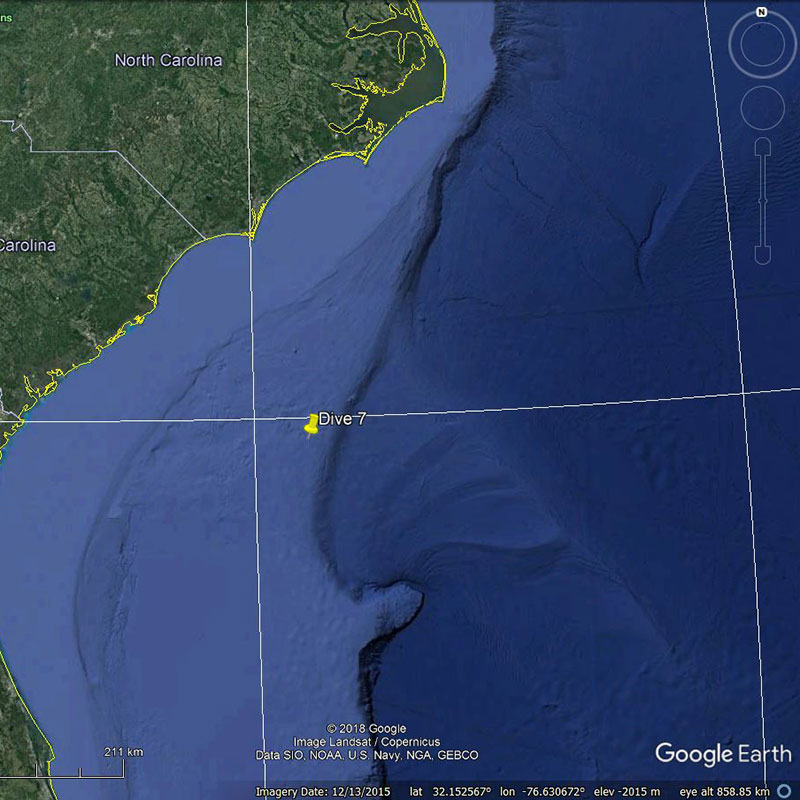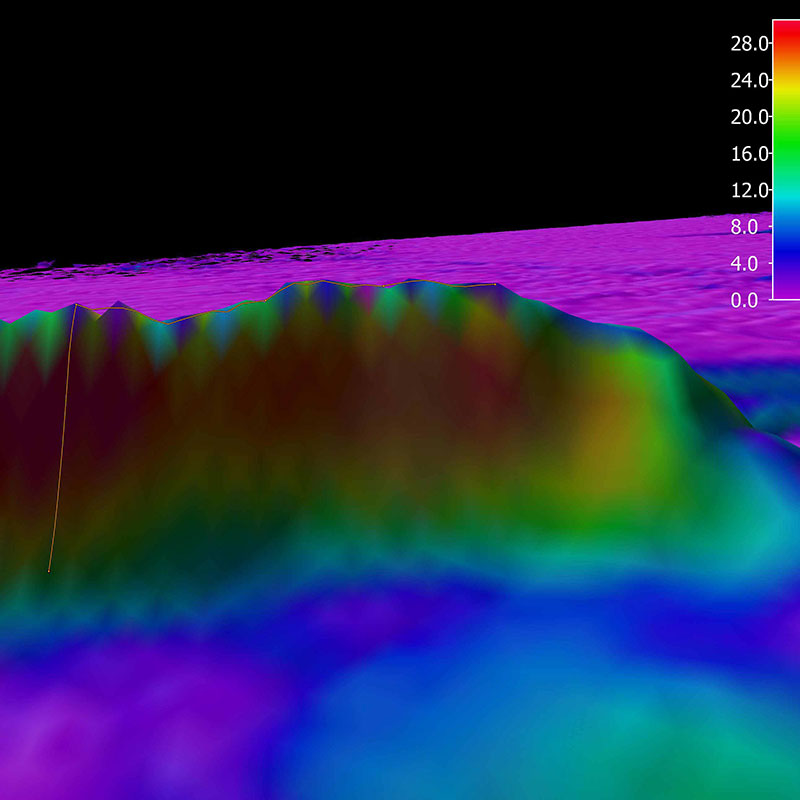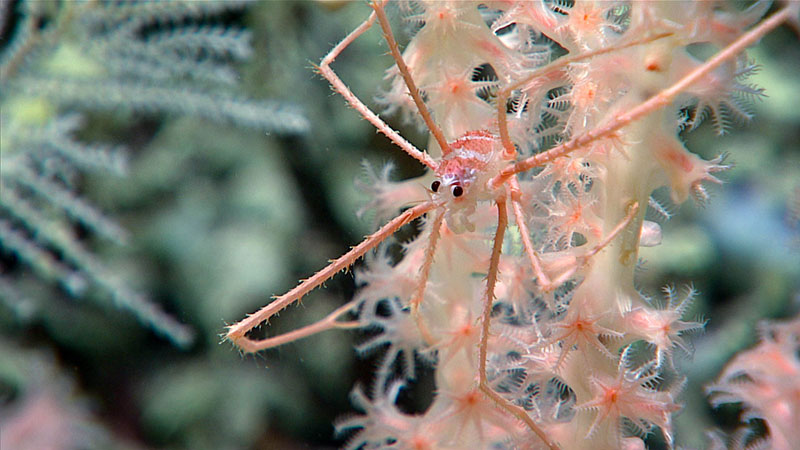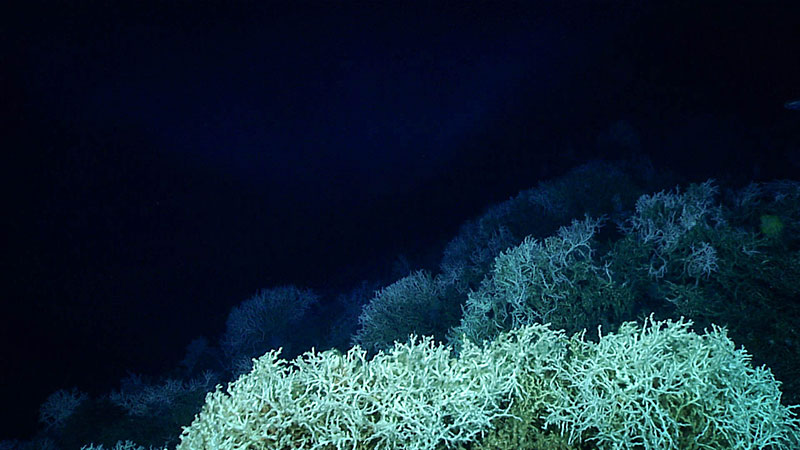Loading the player...
Dive 07: Sea Star Solstice Snack
On June 21, the Summer Solstice, while exploring Richardson Ridge at ~870 meters (2,854 feet) depth, we saw this sea star feeding. Being able to see animals in situ, alive and in their natural habitats, can help us learn things about them that we could never learn from simply studying a specimen in a lab.
Video courtesy of the NOAA Office of Ocean Exploration and Research, Windows to the Deep 2018. Download larger version (mp4, 23.4 MB).
Even with everything and everyone ready to dive, the ship can still experience delays due to nature. Today was one of those days. After arriving on station for the dive, the mission team encountered four knots of currents and winds between 15 - 20 knots, making it unsafe to deploy the remotely operated vehicle (ROV) Deep Discoverer. These conditions were due to being in the path of the Gulf Stream. So the team decided to transit east, further offshore, to hopefully find suitable diving conditions. Being out on a ship in the deep sea, the mission team has to be ready to change anything on the fly and that is just what they did. Originally this dive was supposed to be at Savannah Banks, but due to quick planning from the ship, the dive was not lost and the ROV instead dove at a site dubbed Richardson Ridge.
The ROV was on the seafloor from 18:25:45 - 22:02:25 UTC, on the east side of Richardson Hills. The dive began at 872 meters (2,861 feet) depth, at the base of a steep-sloped ridge with a knife-edge crest. Deep Discoverer scaled the slope to the top of the ridge, traversed for over 100 meters (about 328 feet), and ended the dive at around 783 meters (2,569 feet) depth. After visual inspection, the feature appeared to be created by the stony coral, Lophelia pertusa, as Lophelia rubble was found at the base and flanks, and live Lophelia pertusa created large mounds along the crest. During the dive, scientists observed cutthroat eels, a possible juvenile coral hake, a female skate, jellyfish, sargassum from the surface, crinoids, a very large shrimp (about 20 centimeters or 7.9 inches long) with modified swimming legs, bamboo coral, oreo fish, feather stars, hermit crabs, bamboo coral, squat lobsters, venus flytrap anemones, mushroom coral, golden crab, goosefish, and sea stars including a couple feeding.
A highlight during the dive was a sea star feeding around a depth of about 800 meters (2,625 feet). The sea star’s stomach looked extended in the imagery, leading the scientists to speculate that it was feeding on a plumarella coral. This might be a first-time sighting of this behavior. The pedicellariae, which are defensive organs like miniature pincers present in echinoderms, looked to be in a defensive mode. Additionally, during the dive around 830 meters (2,723 meters), there were noticeable changes in the water column with a rise in temperature and a drop in oxygen, leading to shimmering in the water. The scientists took biological samples of three of the corals observed and of the coral rubble to get a better understanding of the species and geologic features in the region. View the dive summary, when available, for details about these collections and the species observed during the dive.
Stay tuned for another exciting dive tomorrow during the eighth dive of the Windows to the Deep 2018 expedition at Richardson Scarp.



